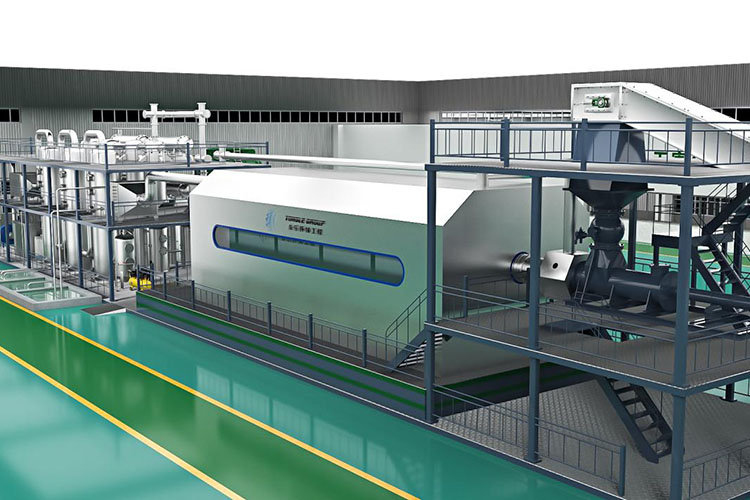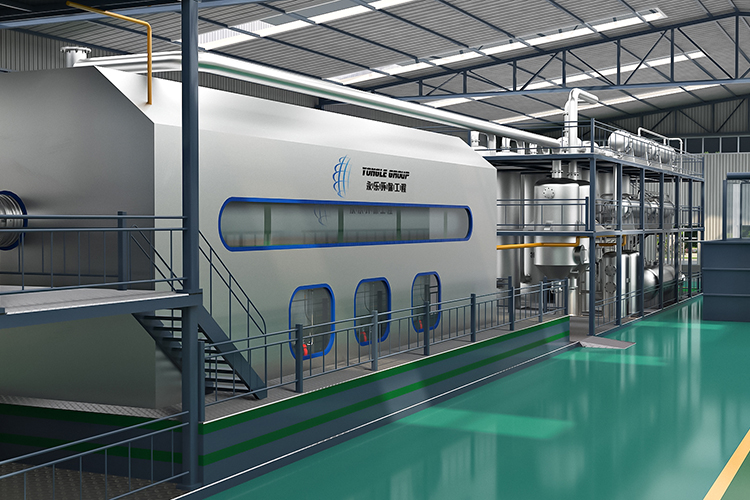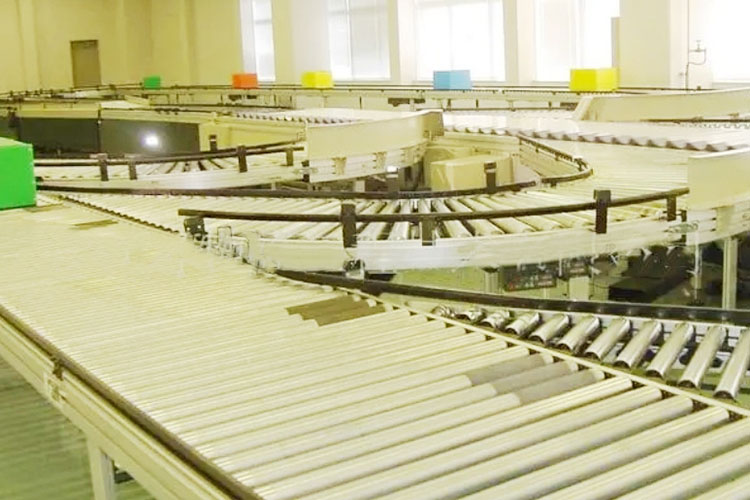In the modern medical system, the disposal of medical waste is becoming increasingly prominent. These wastes include infectious waste, pathological waste, damaging waste, pharmaceutical waste, and chemical waste, which often contain pathogens, toxins, and other harmful substances. If not handled properly, they will pose a serious threat to the environment and human health. High temperature anaerobic pyrolysis technology, as an emerging medical waste treatment method, has gradually been widely applied in the field of medical waste disposal due to its significant advantages in environmental protection, resource recycling, economic benefits, and safety.

The process of treating medical waste using high-temperature anaerobic pyrolysis technology can be divided into several steps, including pretreatment, pyrolysis reaction, gas treatment, liquid treatment, and solid treatment. The first step is pre-treatment, which involves classifying, crushing, and drying medical waste to improve pyrolysis efficiency. The next step is the pyrolysis reaction process, in which medical waste is heated and decomposed under high temperature (usually between 300 ° C and 900 ° C) and anaerobic (or anaerobic) conditions. This process decomposes organic matter into three products: gas, liquid, and solid. The generated gas can be purified and used for power generation or as fuel, liquid products can be further processed into fuel oil or chemical raw materials, and solid products are mainly carbon, which can be used as fuel or soil amendments.
Environmental protection is a major advantage of high-temperature anaerobic pyrolysis technology. Traditional medical waste treatment methods, such as incineration, are prone to producing toxic gases such as dioxins, causing serious pollution to the atmospheric environment. In contrast, high-temperature anaerobic pyrolysis is carried out in an anaerobic environment, effectively degrading harmful substances in medical waste, avoiding the generation and emission of toxic gases such as dioxins, and reducing pollution to the atmospheric environment. Meanwhile, due to the control of anaerobic environments, the generation of secondary pollutants is greatly reduced, further protecting the environment. In addition, high-temperature treatment during pyrolysis can effectively kill pathogens in medical waste, reduce the risk of pathogen transmission, and ensure public health safety.

Resource recycling is another major advantage of high-temperature anaerobic pyrolysis technology. The gas and liquid generated through the pyrolysis process can be used as fuel, achieving energy recovery and reuse. This not only reduces dependence on fossil fuels, but also helps alleviate energy shortages. Solid products (charcoal) can be used for various purposes, such as soil amendments, fuels, etc., to further achieve resource recycling. This method of resource recycling and utilization not only conforms to the concept of sustainable development, but also brings certain economic benefits to society.
From the perspective of economic benefits, high-temperature anaerobic pyrolysis technology has a relatively lower cost in treating medical waste compared to traditional incineration and landfill methods, and can generate additional economic benefits. The energy generated through the pyrolysis process can be partially used for the energy needs of the facility itself, reducing operating costs. In addition, by-products generated during the pyrolysis process, such as fuel gases and liquids, can also be sold or reused, further improving economic benefits. In this way, medical waste treatment is no longer just a cost burden, but can also bring certain economic returns, increasing the attractiveness and feasibility of the technology.
Safety is a major characteristic of high-temperature anaerobic pyrolysis technology. Medical waste often contains a large amount of pathogens, and if not handled properly, it can easily lead to infection and disease transmission. The high-temperature anaerobic pyrolysis technology effectively kills pathogens in medical waste through high-temperature treatment, reduces the risk of infection, and ensures the safety of the treatment process. In addition, the pyrolysis process is relatively fast and can handle a large amount of medical waste, making it suitable for places with large amounts of medical waste production, such as hospitals and clinics.

In terms of policy, high-temperature anaerobic pyrolysis technology has also received widespread support. Many countries and regions have environmental policies and regulations that encourage the adoption of efficient and environmentally friendly medical waste treatment technologies to control harmful emissions and protect the environment and public health. High temperature anaerobic pyrolysis technology has been actively promoted at the policy level due to its significant environmental protection effects and resource recycling potential, which comply with current environmental policies and regulatory requirements.
In summary, high-temperature anaerobic pyrolysis technology has significant advantages in medical waste disposal. It can not only effectively degrade harmful substances, reduce pollution, protect the environment, but also achieve resource recycling and utilization, bringing economic benefits. Meanwhile, this technology handles safety and efficiency, meeting the requirements of modern environmental protection and sustainable development. With the continuous progress and promotion of technology, high-temperature anaerobic pyrolysis technology will play an increasingly important role in the future field of medical waste disposal, making greater contributions to environmental protection and public health safety.
Yongle Environmental Protection is mainly engaged in the research and development, production and sales of complete sets of technical equipment for organic solid waste disposal and comprehensive utilization. Production and manufacturing, domestic waste treatment equipment, tire pyrolysis equipment, medical waste disposal equipment, hazardous waste disposal equipment, and achieve efficient and comprehensive utilization of resources through independently developed low-temperature anaerobic pyrolysis equipment technology solutions.
Tags:Application advantages of high-temperature anaerobic pyrolysis for medical waste disposal,Application advantages of high-temperature anaerobic pyrolysis for medical waste disposal,Yongle Group,YONGLE GROUP
 Latest news
Latest news


























